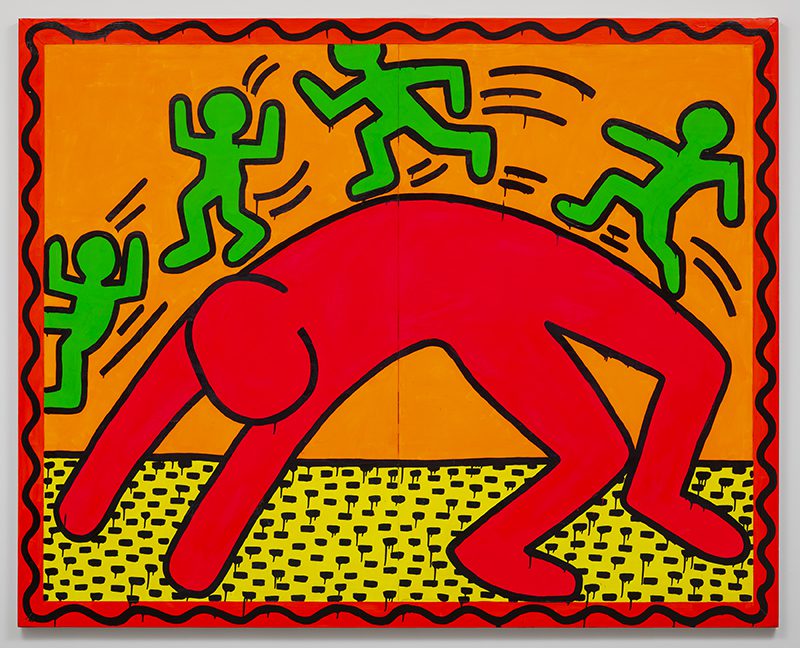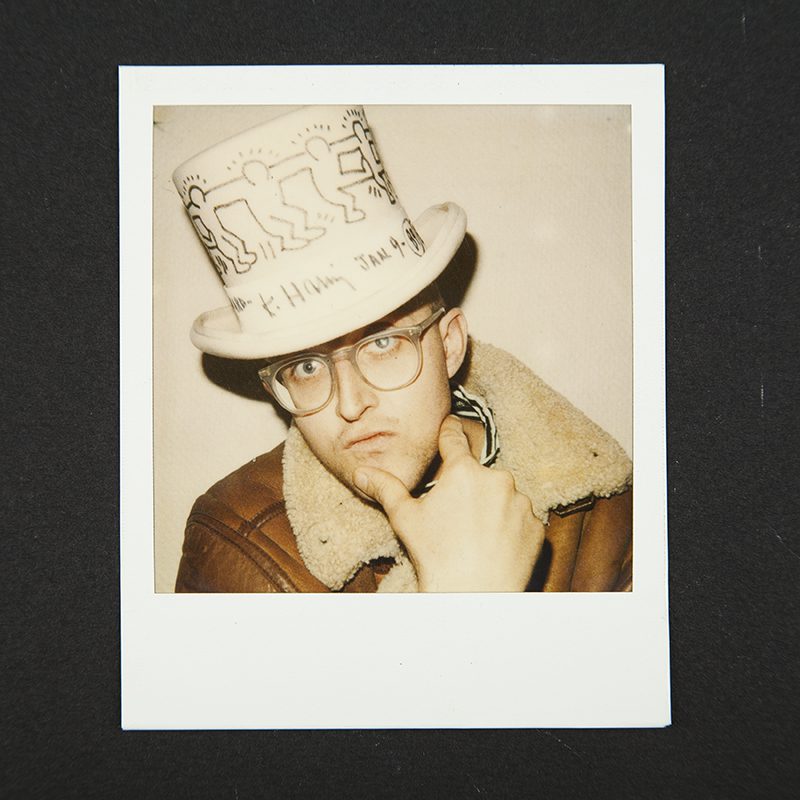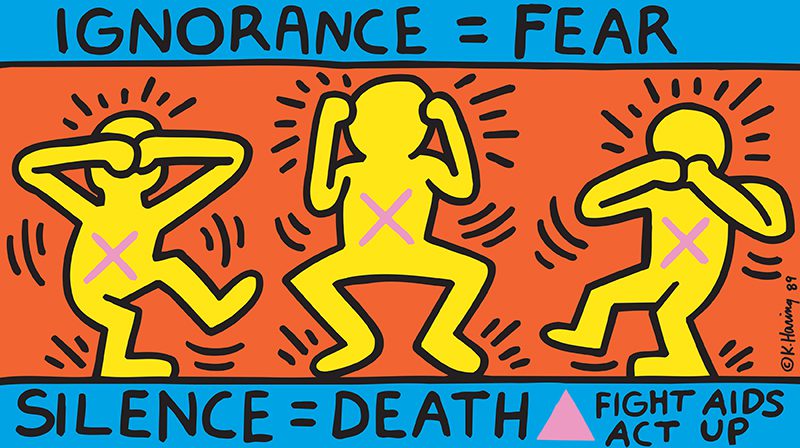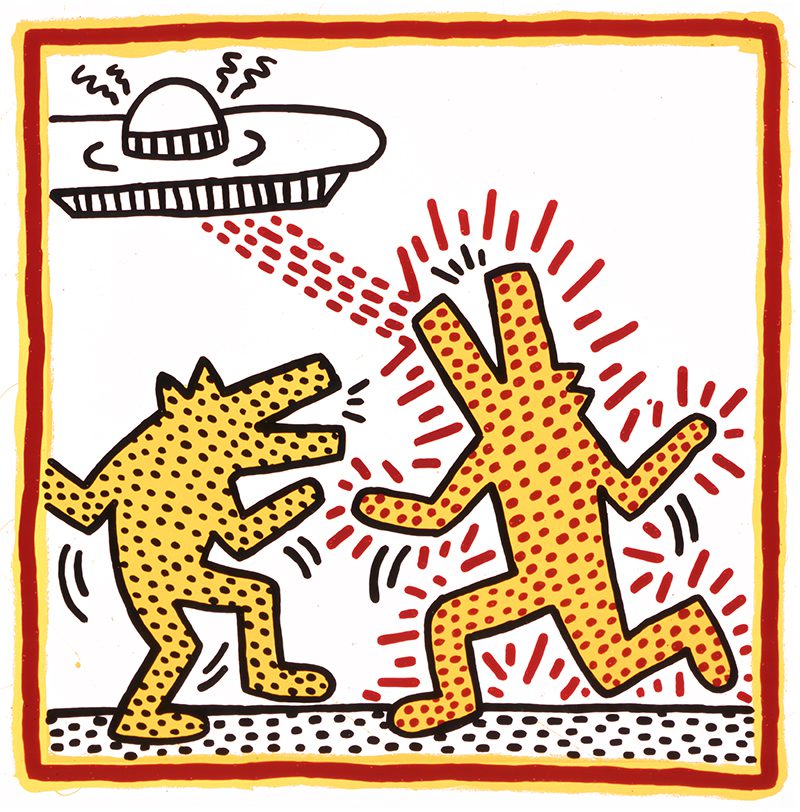
AGO Presents the Work of Keith Haring
As a pop culture icon, synonymous with New York in the 1980s, Keith Haring’s bold images of barking dogs, dancing figures and radiant babies have become part of our visual vocabulary. Now, Torontonians can experience the work firsthand at the Art Gallery of Ontario (AGO).
Keith Haring, born May 4th 1958 in Reading, Pennsylvania, developed a love for drawing at an early age, learning basic cartooning skills from his father and from the popular culture around him, such as Dr. Seuss and Walt Disney.

After two semesters at the Ivy School of Professional Art in Pittsburgh in 1978, Haring moved to New York City and enrolled in the School of Visual Arts (SVA). In New York, he would find a thriving alternative art community outside the gallery and museum system, in the downtown streets, the subways and spaces in clubs and former dance halls.
In addition to being impressed by the innovation and energy of his contemporaries, Haring was inspired by the work of Jean Dubuffet, Pierre Alechinsky, William Burroughs, Brion Gysin and Robert Henri’s manifesto, The Art Spirit, which asserted the fundamental independence of the artist.
Haring was diagnosed with AIDS in 1988. The following year, he established the Keith Haring Foundation, with a mandate to provide funding and imagery to AIDS organizations and children’s programs, and to expand the audience for Haring’s work through exhibitions, publications, and the licensing of his images. Haring died in 1990 of AIDS-related complications at the age of 31.

Since his death, he has been the subject of several international retrospectives. Today, his work can be seen in the exhibitions and collections of major museums around the world. However, the revealing new retrospective Keith Haring: Art Is for Everybody goes far beyond the familiar, to explore the artist’s foundational commitment to social justice for environmentalism, AIDS awareness and anti-racism.
The first exhibition of Haring’s work to be shown in Canada in more than 25 years, Art Is for Everybody features more than 200 artworks, including large-scale paintings on tarpaulin and canvas, sculptures, works on paper, videos, archival materials and representations of his famed subway drawings.
Surveying Haring’s brief but intense decade-long career, the exhibition reveals an artist who used his art and celebrity to protest apartheid in South Africa, raise awareness of the crack cocaine epidemic, the AIDS pandemic, and to denounce racism, capitalism, nuclear war, environmental degradation and the harmful impact of technology and mass media.
“With the words Art Is for Everybody, Haring summarized his approach to art and life. He chose imagery that was as direct as possible and he met people where they were — on the street, in the subway, and in dance clubs. He shared his work on posters, t-shirts and buttons. Be it a line drawing of two figures entwined in a loving embrace, a hungry capitalist pig, or bleak warnings of nuclear destruction — the experience of seeing his large-scale work in person, is both a joyful jolt and a call to action,” says Georgiana Uhlyarik, AGO’s Fredrik S. Eaton Curator of Canadian Art.

“We think we know who Keith Haring was — however, through this exhibition, audiences will see his depth and ongoing impact, and realize his causes are still our causes, from the power of love and music to the necessity of speaking against injustice.”
The exhibition brings together significant loans of art and ephemera from the Keith Haring Foundation, New York and The Broad, Los Angeles, with rarely seen works from numerous public and private collections. Ranging from his early days in New York City and the quick and impactful subway drawings Haring called “a public gift to the world,” to his breakout show at Tony Shafrazi Gallery in Soho in 1982, to his (intentionally) Unfinished Painting (1989), Art Is for Everybody is organized in a loose chronology, while exploring pertinent themes.
The expansive exhibition features immersive elements, including a gallery lit by Day Glo paint, set to a soundtrack of songs from Haring’s personal mixtapes, featuring Eric B. & Rakim, the Beastie Boys, Aretha Franklin and Grace Jones.

Some of the featured artworks include photographs of Haring working in the New York City subway by the artist Tseng Kwong Chi; video works including 1979’s Painting Myself in a Corner and A Circle Play; a selection of Haring’s early tabloid cut-out works on paper critical of Ronald Reagan; Snake Totem (1984), a metal sculpture created by Haring and jewelry designer David Spada for Grace Jones’s Interview magazine photoshoot with Robert Mapplethorpe; two monumental carved wood sculptures featured at the Paradise Garage nightclub; an Untitled painting, exclusively shown at the AGO, used for David Bowie’s 1983 single Without You; a pink leather suit painted by Haring and worn by Madonna; and a selection of posters Haring made in support of the anti-apartheid movement and to publicize the AIDS crisis.
Art Gallery of Ontario’s presentation is curated by Georgiana Uhlyarik, AGO’s Fredrik S. Eaton Curator of Canadian Art.

